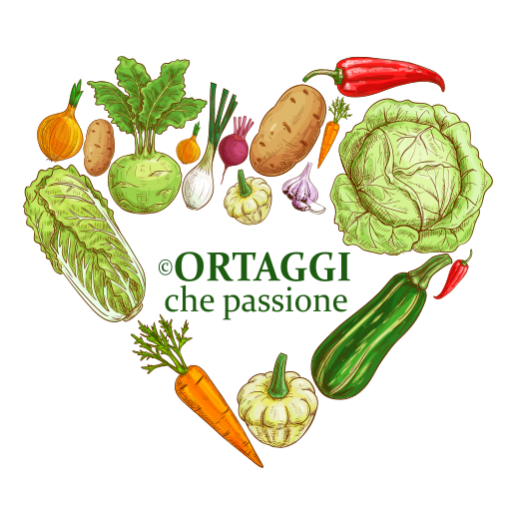The omelette with artichoke stems is a simple yet flavorful dish, ideal for making the most of boiled artichoke stems. Grandma Benedetta often prepares it, transforming these humble ingredients into a delight.
SEASON of artichoke harvest – from October to May depending on the variety.
RECIPES with artichokes
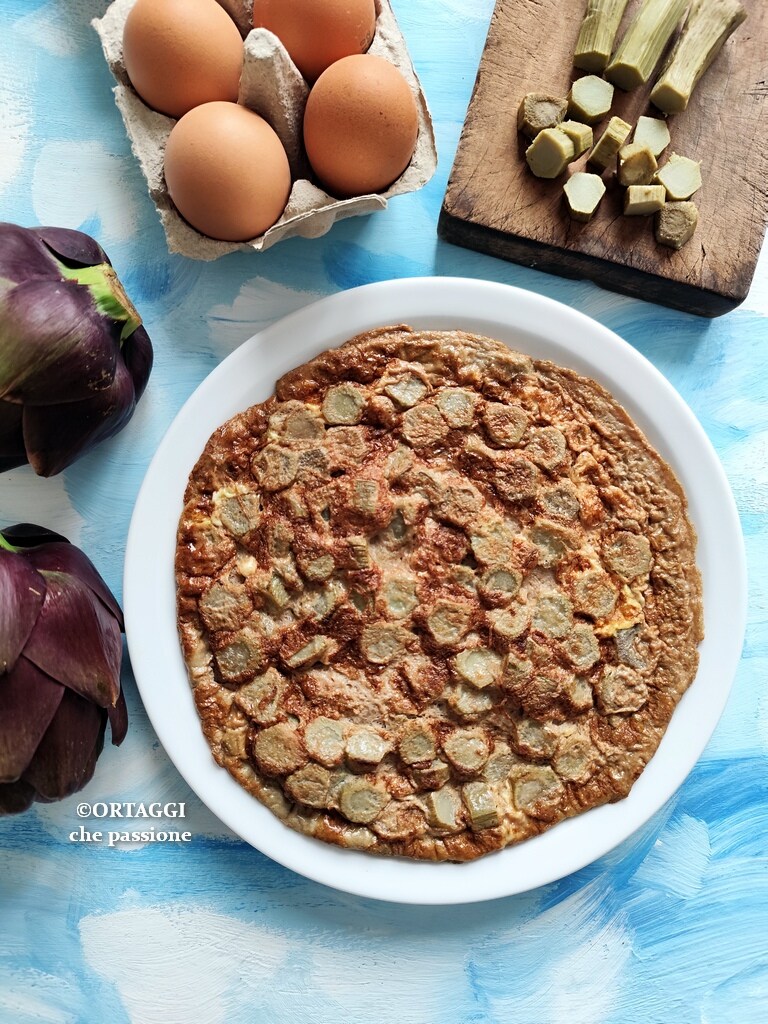
- Difficulty: Medium
- Cost: Economical
- Preparation time: 10 Minutes
- Portions: 2 People
- Cooking methods: Stovetop, Pressure Cooker
- Cuisine: Italian
- Seasonality: Autumn, Winter and Spring
- Energy 211.12 (Kcal)
- Carbohydrates 8.60 (g) of which sugars 0.71 (g)
- Proteins 15.41 (g)
- Fat 13.60 (g) of which saturated 4.99 (g)of which unsaturated 8.40 (g)
- Fibers 4.10 (g)
- Sodium 384.27 (mg)
Indicative values for a portion of 166 g processed in an automated way starting from the nutritional information available on the CREA* and FoodData Central** databases. It is not food and / or nutritional advice.
* CREATES Food and Nutrition Research Center: https://www.crea.gov.it/alimenti-e-nutrizione https://www.alimentinutrizione.it ** U.S. Department of Agriculture, Agricultural Research Service. FoodData Central, 2019. https://fdc.nal.usda.gov
Omelette with Artichoke Stems
- 4 stems artichokes (about 5.3 oz cleaned)
- 4 eggs
- to taste salt (and aromatic herbs)
- 1 drizzle peanut oil (for cooking)
For a texture
🍀 more creamy, add 1.76 oz ricotta and 0.68 oz water (and/or milk)
🍀 more tasty, add 1.76 oz grated cheese and 0.68 oz water (and/or milk)
🍀🍀🍀🍀
How many calories does an artichoke omelette have? Below the calories of half an omelette.
Tools
- Pressure Cooker
- Pan non-stick 9.45 inches
Omelette with Artichoke Stems
Remove the hardest ends of the artichoke stems and peel the outer part to eliminate the tougher fibers. In this case, it is not necessary to soak the artichokes in acidulated water (with lemon or other acid), because during cooking the artichokes will already tend to lose their color.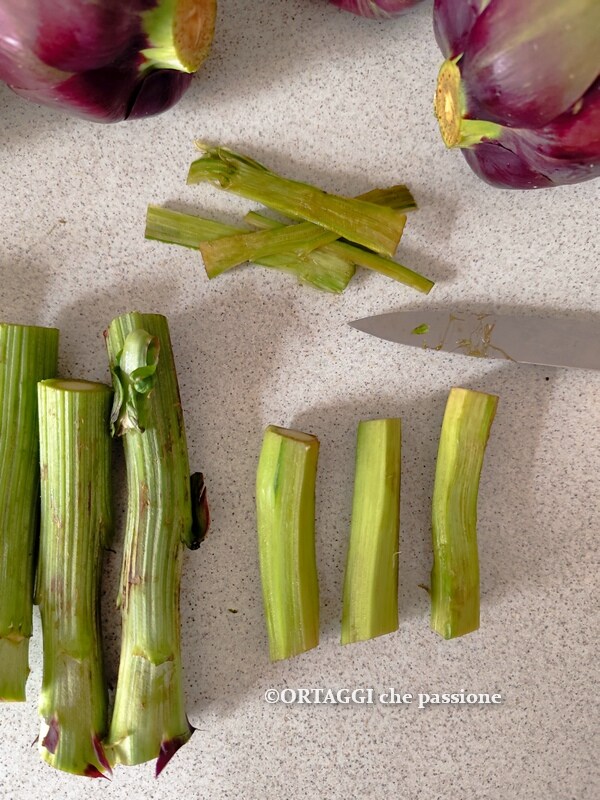
Place the artichoke stems in the pressure cooker basket.
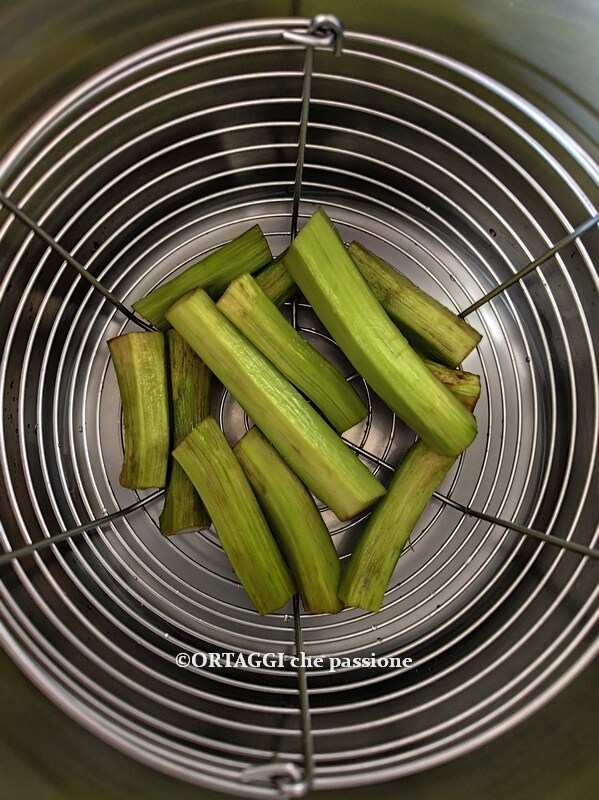
Cook for about 20 minutes (in boiling water it takes 45 minutes).
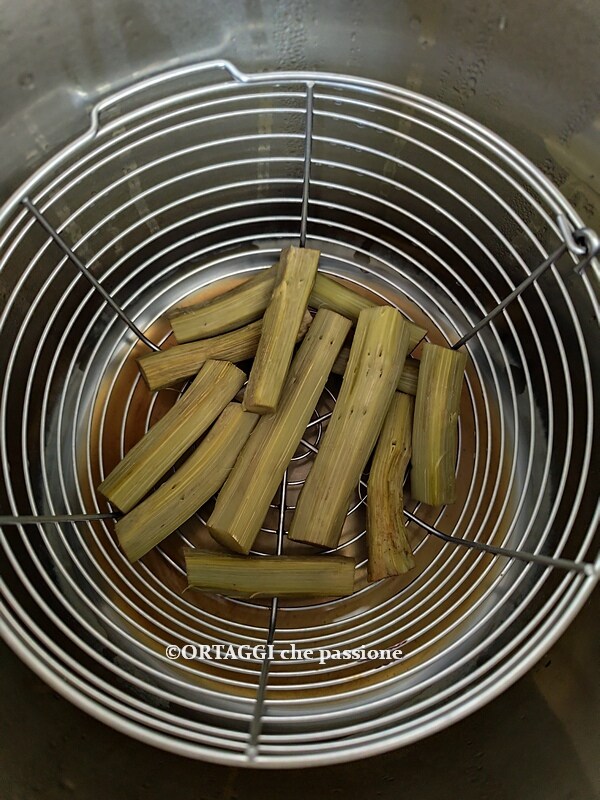
In a bowl, crack 4 eggs, salt and flavor with the preferred herbs.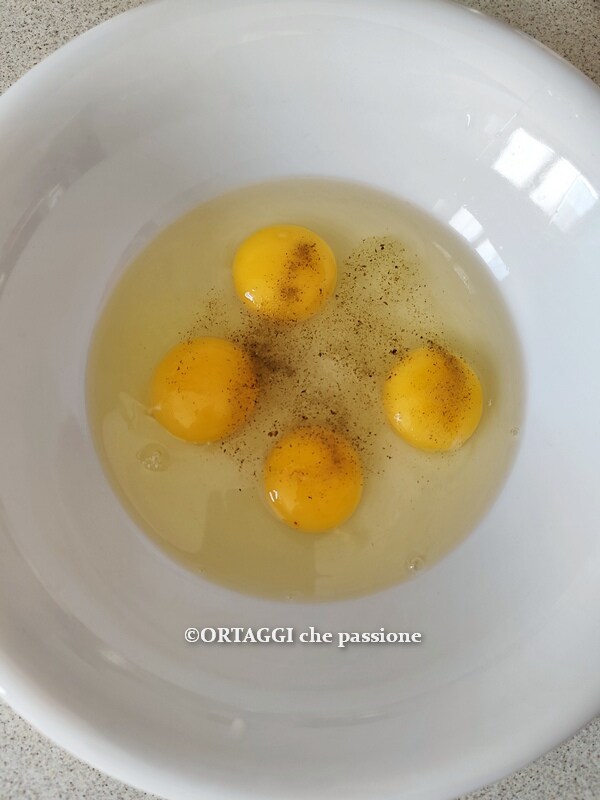
Cut the boiled artichoke stems into slices.
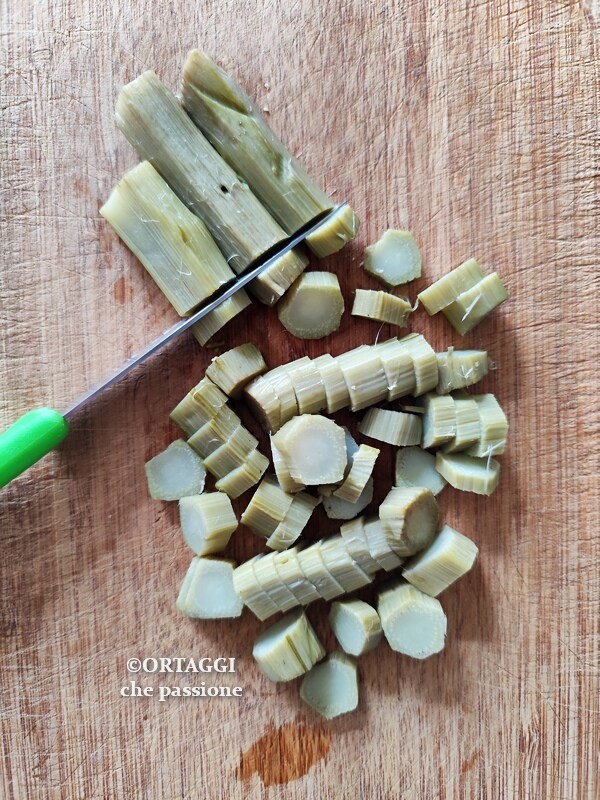
Add them to the beaten eggs.
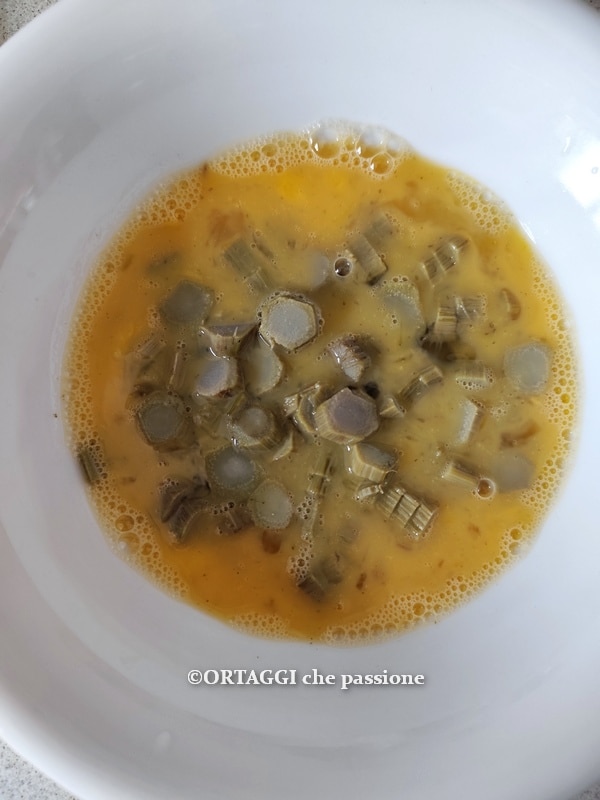
Pour a drizzle of oil into a pan and, when hot, add the omelette.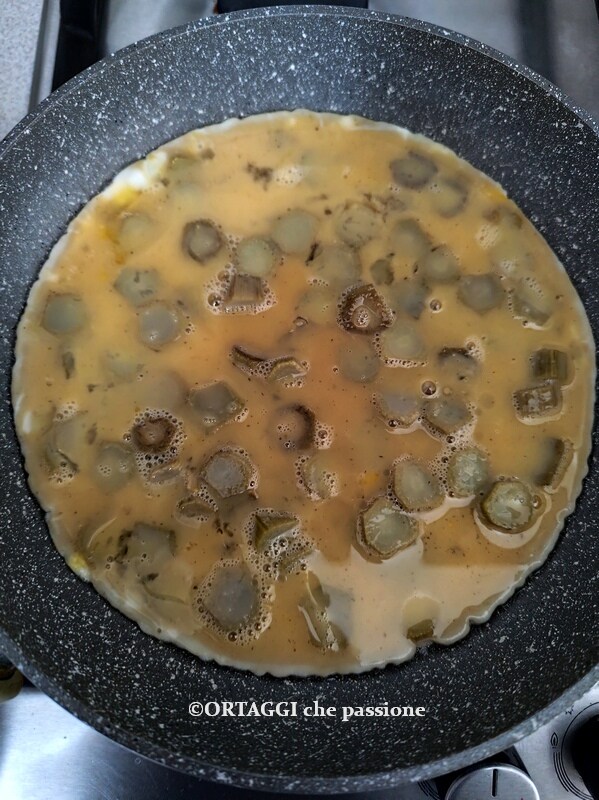
During cooking, open the omelette in several points with a ladle to ensure even cooking.
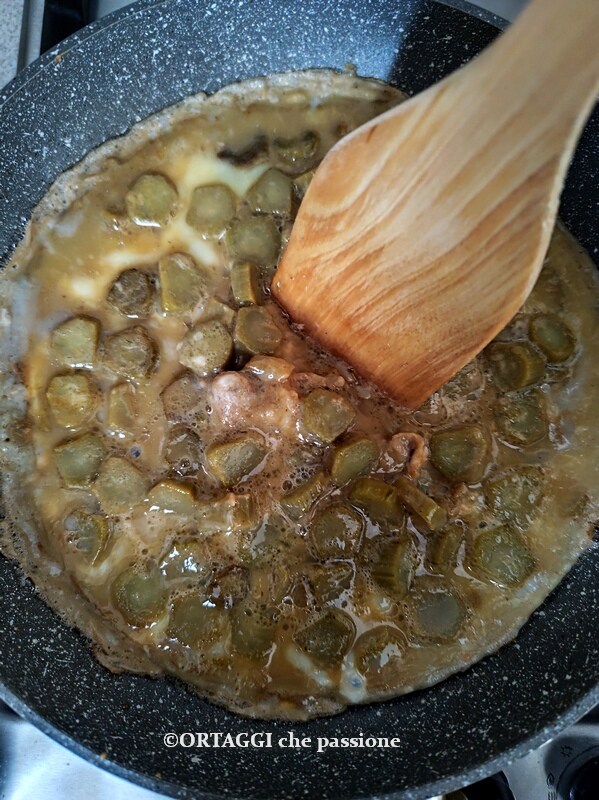
When the cooking side is ready, slide the omelette onto a lid or flat plate to flip it easily.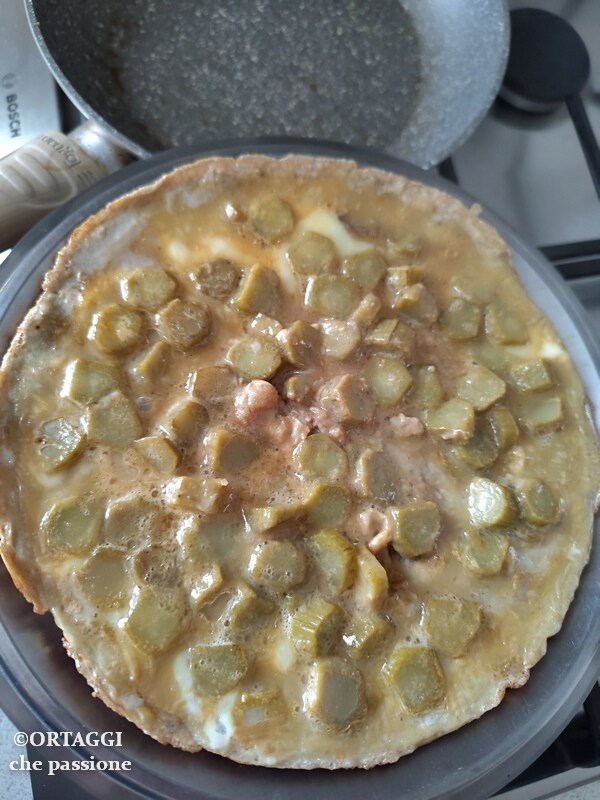
Then, turn the omelette over in the pan and complete the cooking.
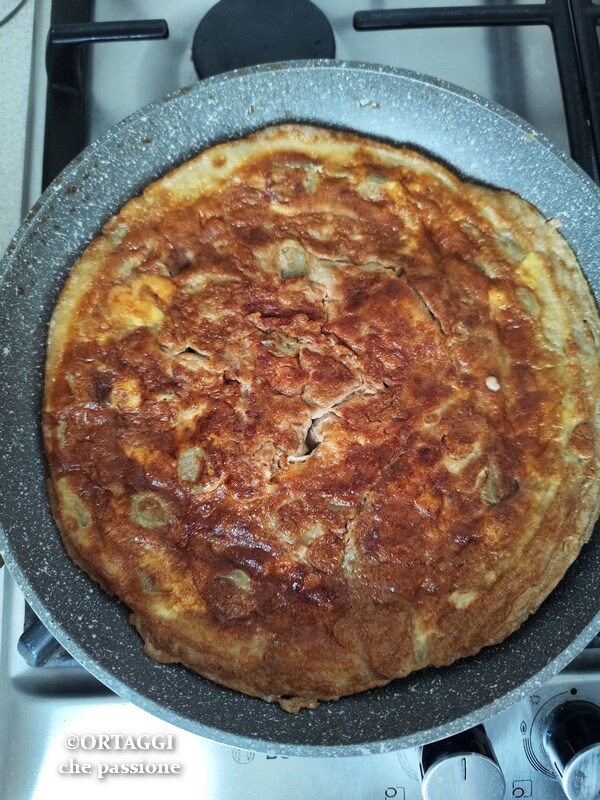
STORE the omelette with artichoke stems
To store the omelette with artichoke stems, let it cool and place it in an airtight container. It keeps in the fridge for a maximum of 3 days. To freeze, wrap it in foil and thaw in the fridge before reheating.
Then, reheat in the oven at 320°F for 10 minutes, in an air fryer at 300°F for 5 minutes, or sauté in a pan over medium heat with a drop of oil. Avoid the microwave to prevent it from becoming rubbery.
To store the omelette with artichoke stems, let it cool and place it in an airtight container. It keeps in the fridge for a maximum of 3 days. To freeze, wrap it in foil and thaw in the fridge before reheating.
Then, reheat in the oven at 320°F for 10 minutes, in an air fryer at 300°F for 5 minutes, or sauté in a pan over medium heat with a drop of oil. Avoid the microwave to prevent it from becoming rubbery.
FAQ (Frequently Asked Questions)
Why do artichokes cooked with eggs change color the next day?
Artichokes cooked with eggs may change color the next day due to a chemical reaction that occurs between the compounds in the artichoke and those in the egg, particularly proteins. This change can also be influenced by the pH of the environment. When artichokes are cut and cooked, their cells release phenolic compounds that, if they react with proteins or other elements in the egg (like iron), can cause a color change, making it darker or altered.
Moreover, the oxidation of the phenolic compounds in the artichokes can be accelerated in the presence of proteins, and the interaction between the moisture of the artichokes and the egg might favor this process of color change. If the dish is stored in the refrigerator, the effect might be more visible due to the low temperatures that intensify the reaction.Which parts of the artichoke can be eaten?
The tender heart of the artichoke, the base of the leaves (the fleshiest part), and the stem, after removing the outer peel, can be eaten. It is important to remove the tougher outer leaves and spiny tips, as well as the internal “choke”.
What are artichoke heads?
Artichoke heads are the inflorescences of the plant, that is, the part we commonly call “artichoke.” They consist of tough outer leaves (bracts), a tender heart, and an internal “choke.”
When should artichokes be avoided?
Artichokes should be avoided by those suffering from gastrointestinal disorders, gallstones, or allergies to plants of the Asteraceae family, as they may worsen symptoms or cause reactions.

